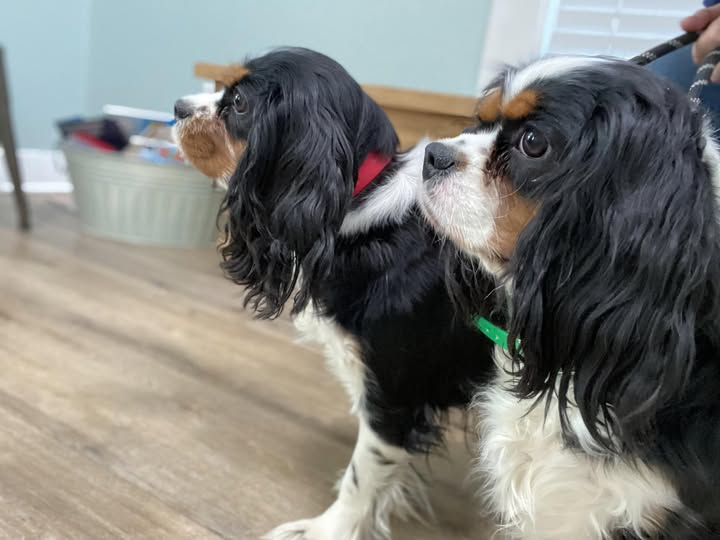The Science Behind the Project
The typical Cavalier King Charles Spaniel is susceptible to disease and defects primarily because of heavy inbreeding in the whole population PLUS some structural head morphology problems. Historic inbreeding has shrunk the Cavalier’s gene pool and concentrates undesirable health characteristics. The Cavalier Improvement Project seeks to reduce or eliminate those characteristics by adding in genetic diversity.
Scientist and Veterinarians have collected much information from peer-reviewed studies, DNA research and population data. The results in multi-species continue to point to the fact that inbreeding reduces lifespan and increases diesese. In zoo animal breeding and livestock population managment, science based strategies are used to attempt low inbreeding numbers. Unfortunatly, the main-stream dog breeding world is stuck in Victorian era mindset of pure-blood is best and extreme inbreeding.
Here on this site we reference science and how it relates to the welfare of dog breeding, especially for our adorable, sweet, little Cavalier King Charles Spaniel dogs.

How Crossbreeding Can Improve Cavalier Lines
By crossing two mostly unrelated breeds with majority not-shared health concerns of each breed, the offspring has a greater chance of not inheriting any recessive traits that plague either of the parent’s breeds. We do not know how to stop some of the breed specific health concerns of Cavaliers, like SM/CM or MVD. We do know that a brachycephalic skull shape is associated with SM/CM. And we know Cavaliers are highly prone to MVD in the heart. By crossing a Cavalier with a breed that does not have SM/CM or MVD, we likely reduce (if dominant) or eliminate (if recessive) those health problems. What we do know from history and science of multiple species, inbreeding is not creating as healthy offspring as genetic diversity brings.
These following three images display a visual to better understand Runs of Homozygosity, also referred to as COI. The golden ‘tick marks’ represent the inbreeding, and where it shows up in the DNA.
Left picture: a Cavalier, note the vast amount of golden color tick marks. That represents the level of inbreeding, also called Run of Homozygosity, in that dog. This Cavalier is very typical of the breed at 35% inbreeding
Middle picture: a poodle showing 10% COI and the amount of golden tick marks is minimal.
Right picture: offspring: 1/2 Cavalier + 1/2 Poodle = 2% COI. Look at the golden yellow tick marks between the Cavalier, Poodle and their offspring! It is clear from these pictures what is most diverse. The crossing of Poodle & Cavalier nearly eliminates the inbreeding. Resulting in a great reduction of shared traits.



A Genomic Study of Myxomatous Mitral Valve Disease (MMVD) in CKCS. Arianna Bionda et. al. (2020)
33 CKCS dogs analyzed using ~230K SNP chip, comparing dogs with early-onset MMVD vs mild/no disease after age 5. This study found high levels of inbreeding in all 33 CKCS measured with runs of homozygosity average 24% COI, range of COI 19-28%. The pedigree-based inbreeding was much lower at 1% COI, showing that pedigree alone underestimates true inbreeding.
Join the Companion Dog Project and Registry
You can join the mission of the Cavalier Improvement Project by joining the Companion Dog Project and the Companion Dog Registry.